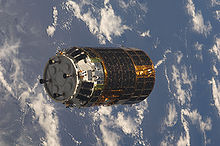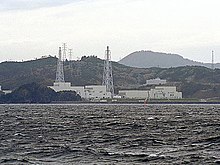Science and technology in Japan

Science and technology in Japan has helped fuel the rapid industrial and economic development of the country.
However, science and technology developed rapidly after the
High levels of support for research and development have enabled Japan to produce advances in
Scientific research in Japan is supported and promoted by the Japanese Government through various institutes and agencies including the Japan Science and Technology Agency (科学技術振興機構), Science Council of Japan (日本学術会議) and the Japan Academy (日本学士院).
Aerospace research

Founded in 2003 through the merging of three aerospace organisations (Institute of Space and Astronautical Science, National Aerospace Laboratory, and the National Space Development Agency of Japan), the
Japan also sends several astronauts to work in the ISS and help other international collaborators with space research and technology transfers. Since 1990, twelve Japanese individuals have participated in space flights, two of whom were women. Two Japanese astronauts also served as commanders of the ISS, with the last being Akihiko Hoshide. [2]
In recent years, Japan's Hayabusa2 spacecraft has been used to collect samples from a near-Earth asteroid called Ryugu and back to Earth for research and analysis. The 6-year mission ended in 2020. [3]
Nuclear energy

Since 1973, Japan has been looking to become less dependent on imported fuel and start to depend on
Following
Electronics

Japan is well known for its
Japan has large international corporate conglomerates such as
It is estimated that compared to the amount of known reserves still in the ground, 16% of the world's gold and 22% of silver is contained in electronic technology in Japan.[5]
Robotics
Japan is also known for robotics. There are many types of robots that are used in restaurants, hospitals, parks, or in different companies.[6] Robots are used for different purposes, such as in restaurants in Japan. Japanese research companies are researching on advanced AI robots that can mimic the work of humans.[7]
Medicine and healthcare
Japan is also a global leader in the area of biomedical research along with the United States and elsewhere. In 2015, the country established the Japan Agency for Medical Research and Development to help implement biomedical research and development projects and improve the support infrastructure for clinical research. Medical research in Japan typically takes place in various national university and private university research hospitals. These research hospitals include University of Tokyo Hospital, Tohoku University Hospital, and Keio University Hospital among others.
Ten Japanese Great Inventors
On the centennial anniversary of the creation of the industrial rights system in 1985, the Japan Patent Office selected ten Japanese inventors whose inventions helped contribute to Japan's rapid industrial development and scientific research. These inventors are:
- Sakichi Toyoda(豊田佐吉): Patent no. 1195, human-powered wooden weaving machine
- Kokichi Mikimoto(御木本幸吉): Patent no. 2670, cultured pearl
- Jokichi Takamine(高峰譲吉): Patent no. 4785, adrenaline
- Kikunae Ikeda(池田菊苗): Patent no. 14805, sodium glutamate
- Umetaro Suzuki(鈴木梅太郎): Patent no. 20785, vitamin B1
- Kyota Sugimoto(杉本京太): Patent no. 27877, Japanese typewriter
- Kotaro Honda(本多光太郎): Patent no. 32334, KS steel
- Hidetsugi Yagi(八木秀次): Patent no. 69115, Yagi-Uda antenna
- Yasujiro Niwa(丹羽保次郎): Patent no. 84722, Phototelegraphy Method
- Tokushichi Mishima(三島徳七): Patent Number 96371, MKM steel
See also
- History of science and technology in Japan
- Japanese automotive industry
- Neodymium magnet
- List of Japanese inventions
- Research and development in Japan
References
- ^ "Global Innovation Index 2023". WIPO. Retrieved October 17, 2023.
- ^ Une, Yukiko (2021-04-26). "Akihiko Hoshide Becomes Second-Ever Japanese Commander of the ISS | JAPAN Forward". japan-forward.com. Retrieved 2022-03-11.
- ^ Ryan, Jackson. "Japan's Hayabusa2 asteroid sample mission ends with perfect landing". CNET. Retrieved 2022-03-11.
- ^ "Nuclear Power in Japan | Japanese Nuclear Energy - World Nuclear Association". world-nuclear.org. Retrieved 2021-06-05.
- ^ "Tokyo Olympic medals to be made from e-waste - Nikkei Asian Review". Archived from the original on 2019-08-17. Retrieved 2019-08-20.
- ^ Steen, Emma. "This new Tokyo cafe will have robot waiters controlled remotely by disabled workers". Time Out Tokyo. Retrieved 2021-06-05.
- ^ "The University of Tokyo". The University of Tokyo. Retrieved 2021-06-05.
